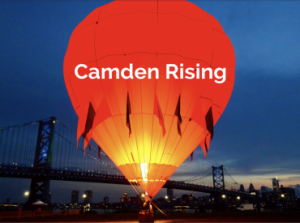Long the object of disparaging commentary as the nation’s poorest and most dangerous city, Camden, New Jersey is experiencing a renaissance of sorts, if claims for its recovery are to believed. Ads are everywhere, in print, on buses, and on TV: “Camden Rising.” New buildings, new parks, and new companies dot the waterfront and downtown. A half century in decline, is Camden finally on the way back? 
Like so many other post-industrial cities, Camden’s fortunes seemed to be improving in the first years of the twenty-first century—at least before the Covid-19 virus struck, putting all expectations at risk. During the years Chris Christie served as governor, between 2010 and 2018, Trenton showered the city with favors, not the least more than $1.6 billion in subsidies to lure business to the city. Years after the collapse or departure of companies that had once made Camden one of the country’s most productive cities for its size, the reversal of fortunes appeared fortuitous. There was Subaru at the edge of Admiral Wilson Boulevard where one of the nation’s first Sears and Roebuck buildings had stood abandoned for years. There was a whole new research and manufacturing campus off Broadway where one of the city’s big-three companies, New York Ship, had employed thousands to produce ships in war and peace until the company collapsed in the mid-1960s. There too was the Philadelphia 76ers state-of-the art practice facility, not located next to their stadium in South Philadelphia but on the Camden waterfront. And so many others.
The migration of so many new businesses to Camden stemmed from expansion of the state’s economic incentive program, one of many competing nation-wide to attract new jobs or retain those in hand. Intended initially to be capped at $200 million, the program opened up without limits. With special provisions aimed specifically at Camden designed to induce new investment, the tide began to rise.
Camden’s new industries didn’t move from far away. Most had been located in the state and the county. And, it turns out, they seized their opportunities with considerable help from Democratic powerbrokers, who ended up taking advantage of the subsidies themselves. Through investigations first by a task force set in motion by Chris Christie’s successor, Phil Murphy, and subsequently detailed by the investigative reporting of New York’s Public Radio station, WNYC in conjunction with ProPublica, the New Jersey Opportunity program proved one more example of public policy deepening existing gaps between rich and poor. Although the state provided a modest investment in workforce development, it wasn’t until three years later that city officials announced their own program—without public funding and with only good will to make sure that Camden residents, among the nation’s poorest—have a chance to benefit from the presence of so many new job opportunities in the city.
Even as the coronavirus brought business to a near standstill, officials reported that more than 1400 Camden residents had been hired by companies receiving tax breaks in the city. The figures were antidotal and subject to change in the crisis. In the new first years of under the generous program of subsidies, Camden’s poverty rate had not materially fallen, remaining at 36.4 percent in 2019. It would take a good deal more work in the years ahead to reduce that number and thus to assure critics that leadership from the top down could work.
One of a good many cities showing signs of recovery in the new century, Camden remains a prime example of skewed policy decisions and the limits of trickle-down reforms. Looking to Newark, New Haven, or Pittsburgh, where poverty has actually continued to move up—though not approaching Camden’s high level—similar challenges exist. In their cases, more sustained efforts to achieve equity from reinvestment suggest a greater probability of achieving inclusive growth and a narrowing of the inequalities that have haunted these cities for more than a generation.
For more commentary on Camden’s revitalization efforts, click the “Camden” designation at the end of any of my blogs on the subject